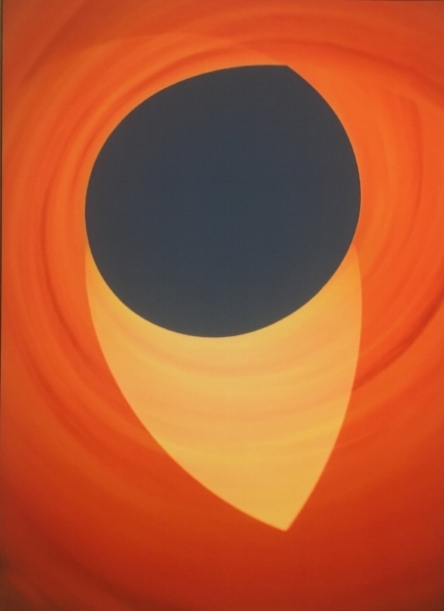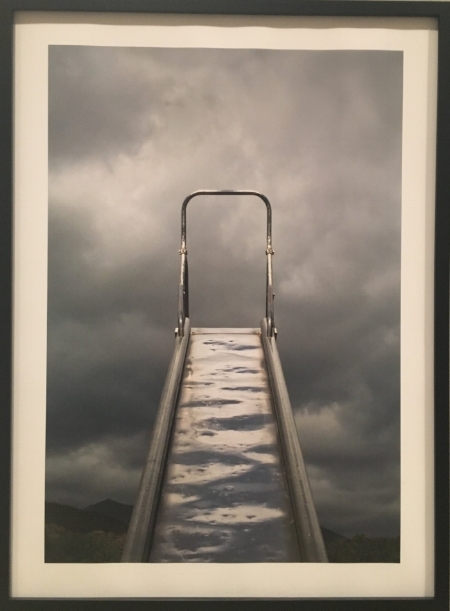Brenda Biondo: Play
April 13, 2018
by Poppy Gauss, Cohort ’16
Brenda Biondo: Play at the San Diego Museum of Art presents two bodies of work by Colorado-based photographer, Brenda Biondo: prints from the artist’s Paper Skies series and selections from her Playground series. Both series focus on familiar subjects, the sky in one and playground structures in the other.
The Paper Skies series demonstrates form-based subject intent through carefully-composed photographic abstractions whose actual subject matter is the sky. Biondo states that her inspirations include the geometric forms of modernist painters such as Frank Stella, Mark Rothko, Barnett Newman and Georgia O’Keeffe; as well as minimalism, color field, and hard edge abstraction art movements in general. Biondo’s emphasis on atmospheric color and light, her interest the properties of natural light and our perception of it, also references the Light and Space movement of Southern California in the 1960’s. The work is produced by a simple process; printed photographs of blue sky, gray clouds, and warm sunsets are cut, folded, and re-photographed against the sky. By means of dye sublimation, the new images are printed onto transfer paper that is affixed to an aluminum substrate.
I was particularly drawn to Paper Sky No. 27: the complementary colors of orange and blue create a striking composition and it is interesting to consider that Biondo has used no digital manipulation. She wants the viewer to consider the photo as object, for her the physical properties are as important as the image, so she not only takes a photograph, she then physically manipulates it, by folding, rolling or cutting. In doing so, she introduces an ambiguity between the real and the reproduced, allowing the original print to be seen in a new context.


In contrast, the more traditional framed works from the Playground series demonstrate expressive subject intent with playground structures as the actual subject matter. Biondo’s Playground series was published as a book titled, Once Upon a Playground in 2014, and the images depict these play structures, ubiquitous in the American landscape of the twentieth century as languishing in various degrees of obsolescence.
Interesting supplemental information about the history of playgrounds supported the exhibition. As noted in the show, playgrounds were initially seen as modern symbols of mid-century leisure. Biondo researched the history of modern playgrounds stating they began as early as the late 1800s in crowded cities. These early playgrounds, called sand gardens, were first popular in Germany. Early on, American equipment manufactures created structures for swinging, climbing and sliding. These playgrounds were typically supervised with trained instructors leading the children. In 1906, the playground association of America was founded. Biondo goes on to describe what structures were most popular in the different eras, for example from pop culture cartoon characters and cowboys of the 1950s to rocket ships and freeform abstract structures of the 1960s. This group of images are not as abstract as the Paper Skies series, yet are created with an abstract approach and unconventional composition.
